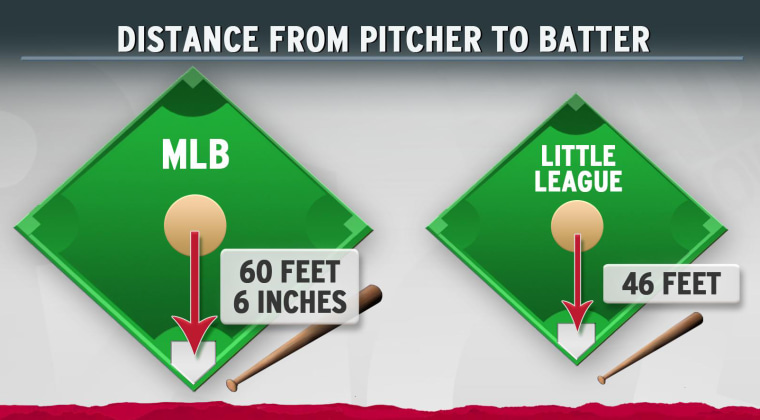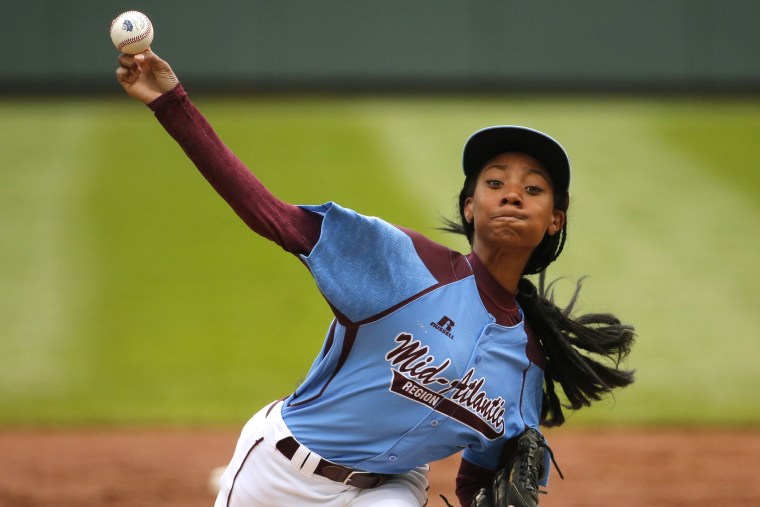On Tuesday when Rachel named Mo'ne Davis the Best New Thing in the World for pitching a shut-out game to put her team into the Little League World Series, she pointed out that the pitcher's mound in Little League is closer to home plate than in MLB, so while a Little League pitch may be slower than a major league pitch in terms of raw numerical speed, it has a shorter distance to travel to get to the plate where a mystified batter can watch it go by.
Now that the 13-year-old Ms. Davis has earned a spot in the record books for being the first female player to pitch a shut-out in a Little League World Series game (leading her Philadelphia team to victory in Friday's game against Nashville), we have an excuse to figure out her pitching speed in major league terms.
Let me explain what I mean by that:
My colleague Nick Tuths noted that at one point in Friday's game he saw one of Davis' pitches was clocked at 71 miles per hour. What I want to know is how long a 71 mph pitch takes to reach a Little League home plate, and how fast a major league pitch would have to be thrown to reach home plate in the same amount of time at the major league distance.

So, as Rachel pointed out the other night, the distance from the pitcher's rubber to home plate according to official Little League field specifications is 46 feet.
The distance from the pitcher to home under MLB regulations is 60 feet, six inches.
I'm sure there's a way to just ask Google to do this for me, but I'm going to break everything down into a common currency of inches and seconds and then convert back to miles per hour:
71 miles per hour is 374880 feet per hour (5280 feet in a mile), which is 4498560 inches per hour, which is 74976 inches per minute, which, dividing by 60 one more time, is 1249.6 inches per second.
46 feet is 552 inches.
So 552 inches / 1249.6 inches per second = 0.441741357234315 seconds for a 71 mph Mo'ne Davis fastball to reach home plate. (I'm doing this on a calculator, so I'm just going to copy/paste the full decimal instead of rounding.)
Now, 60'6" = 726 inches.
726 inches / 0.441741357234315 seconds = 1643.495652173913 inches per second, which is 136.9579710144927 feet per second which, divide by 5280, is 0.0259390096618357 miles per second...
...or, x 60 seconds in a minute = 1.556340579710145 miles per minute...
...or, x 60 minutes in an hour = 93.38043478260869 miles per hour is how fast a MLB pitch has to be to reach home plate in the time it takes for a 71 mph Little League pitch to reach home plate.
So a 71 mph Mo'ne Davis Little League fastball is the equivalent of a 93 mph MLB fastball in terms of how much reaction time the batter has before he (or she) whiffs it.
